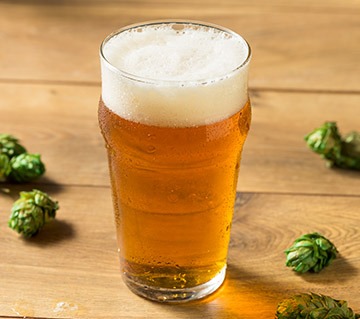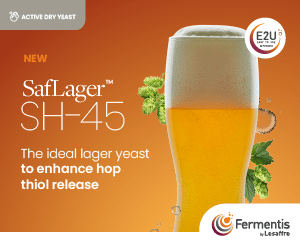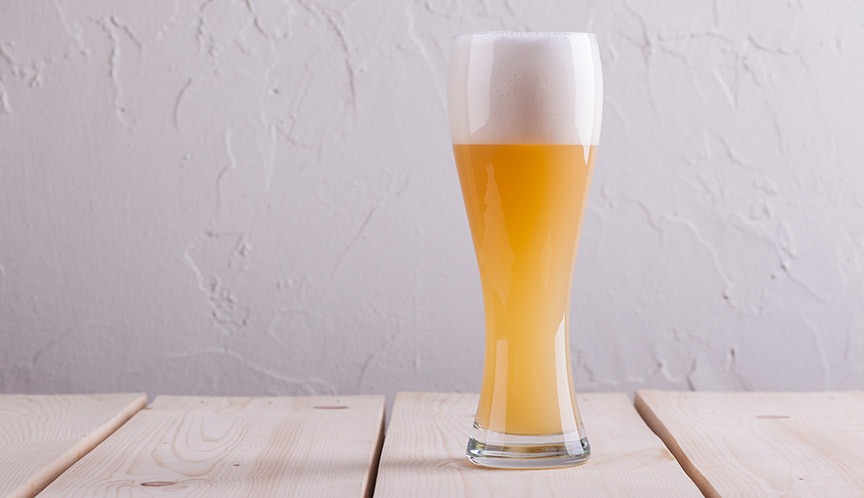A Modern Method for Calculating IBUs

When I first started homebrewing, the software that I used had three options for predicting IBUs: Tinseth, Rager, and Garetz. “Tinseth” had a nice sound to it, so I chose that one. That option worked well enough until I became interested in flameout additions and hop stands, where the Tinseth formula predicts a contribution of zero IBUs from these additions. When I found that IBUs can be professionally measured at a reasonable cost, I did one small experiment to measure them in finished beer with and without a hop stand. And then another experiment. And then another.
Just when I thought I could predict IBUs reasonably well, I’d get results that challenged my assumptions. I wrote detailed blog posts about almost all of my experiments, so that anyone can (hopefully) replicate my findings. These can be found on my blog Alchemy Overlord (https://alchemyoverlord.wordpress.com). More than seven years and well over 300 measured values after the first experiment, I’ve finished a new model for predicting IBUs. To acknowledge the critical influence of prior work by Tom Shellhammer, Mark Malowicki, and Val Peacock, and to make note of my current efforts, I call this new model SMPH (an acronym from our last names). This article gives an overview of the model and addresses some common misconceptions about the IBU. Test results compare this model with four other IBU models on 18 different beers ranging from 20 to 70 IBUs. The SMPH model is available for anyone to use free of cost at https://jphosom.github.io/alchemyoverlord/
I’ve been very careful about measuring or estimating volumes, alpha acid ratings, pH, wort cooling times, and any other factor that might be relevant. I’m not saying that you also need to be obsessed with details in your brewing (it’s supposed to be fun, right?), but the accumulation of small measurement or estimation errors may have a large impact on predicted IBUs. If you’re lucky, they can cancel each other out. If you’re unlucky, these measurement errors can add up and make the prediction meaningless.
If predicting IBUs is so difficult and imprecise, why bother? Obviously, you don’t need to care about predicting IBUs if you’re happy with the bitterness levels of the beers that you make with the recipes you have. But, if you find that your first attempt at a beer can yield a bitterness that isn’t quite right, you may want to get the best prediction of bitterness that you can before brewing. And when trying to get as close as possible to brewing a clone of a commercial beer, IBUs is another data point that you can zero in on. That prediction might still be a bit off, but an in-the-ballpark estimate is still better than no estimate at all. By way of analogy, even though pH test strips aren’t as accurate as a digital pH meter, if you don’t have a pH meter it’s still better to use test strips than to pretend that pH doesn’t matter.
IBUs: IAAs and ABCs
The IBU is a measurement of the amount of infrared light absorbed by a sample of processed beer. It is often (and incorrectly) reported that one IBU equals one part per million (ppm) of isomerized alpha acids (IAAs). However, as Val Peacock, retired Anheuser-Busch hop guru, explains, the IBU was developed in the 1950s and 1960s to measure the combination of both IAAs and “auxiliary bittering compounds” (ABCs).1 The researchers at that time knew that there are bitter substances in beer other than IAAs, and they deliberately included them in the IBU measurement. The IBU combines the concentration of IAAs and ABCs in beer into a single measure of approximate bitterness. The confusion about one IBU equaling one ppm of IAAs has come up because they scaled the IBU measurement so that the two numbers would often be close to each other. However, this rough correspondence only holds under specific brewing circumstances that were common in the 1960s and are less common today. When the IBU was developed, IAAs contributed to about 70% of the IBU value, and ABCs contributed the remaining 30%. The proportion of IAAs contributing to the IBU can vary greatly depending on brewing methods. In the data I’ve collected for finding SMPH parameter values, the estimated IAA contribution ranges from 0% to over 80% of the IBU.
Oxidized alpha acids (oAAs) are produced when hops are added to hot wort.2,3 Based on my experiments using hops of widely varying alpha and beta acid percentages and analysis of polyphenol concentrations, I estimate that about 10% of the available alpha acids oxidize quickly in boiling wort (producing oAAs) and that oAAs are the largest fraction of the ABCs. In most beers, the other ABCs are malt and hop polyphenols, followed by oxidized beta acids. In her Oregon State University Master’s thesis, Christina Hahn notes, “individually, iso-alpha acids and (oxidized alpha acid) concentrations are relatively poor predictors of sensory bitterness, while the sum of iso-alpha acids and (oxidized alpha acids) is almost as good a predictor of sensory bitterness as (the IBU).”4 She found a strong correlation (R2 = 0.86) between sensory bitterness and the IBU, and a strong correlation (R2 = 0.80) between sensory bitterness and the combination of IAAs, oAAs, and alcohol (ABV).4 In short, the concentrations of IAAs and oAAs are, together, very good predictors for both sensory bitterness and the IBU. These findings support the claim that oAAs are the largest component of the auxiliary bittering compounds.
SMPH Model: The Big Picture
The starting point for development of the SMPH model was an understanding of Val Peacock’s explanation that IBUs are a specific proportion of the concentrations of IAAs and ABCs in beer,1 and realizing that Mark Malowicki’s model of the production and degradation of IAAs in boiling wort5 could be combined with rough estimates of the concentration of each ABC and different loss factors to predict IBUs. At that point there was the skeleton of a model but a lot of missing factors and unknown parameter values. These values were determined (or found to be irrelevant) by controlled experiments in which only the factor in question was varied. Data from those experiments were gradually added to the set of model training data. The process of estimating a loss factor and then minimizing the mean-squared error on the remaining parameters was iterated until the error on a cross-validation set was reduced to an acceptable level.
Like the Garetz model, the SMPH model can account for a large number of factors that influence IBUs. In the SMPH model, that means accounting for the boiling point of water, wort gravity, wort pH, wort clarity (e.g. a careful vorlauf vs. brew-in-a-bag wort collection), form of the hops (whole cones or pellets; extracts are not yet considered but may be in the future), hopping rate, hop freshness, kräusen loss, flocculation, finings, filtering, and age of the beer. Basically every step in the brewing process seems to have some influence on IBUs.
The SMPH model uses approximations of all of the currently known factors that might influence IBUs. The goal has not been to precisely quantify each of the myriad factors (I only have one life to live), but to put all of the approximations together into one imperfect but reasonable model. Where even approximations have been difficult to come by, I used over 300 measured IBU values to find the parameter values that give the best fit to the data.
Chart 1, below, illustrates the different components of the SMPH model. Measured IBU values from finished beer are shown at 10-minute intervals during a 90-minute boil. The green area shows the contribution from isomerized alpha acids (using the Malowicki model), the blue area shows the contribution from oxidized alpha acids, and the red area shows the contribution from malt and hop polyphenols. The SMPH model output is the sum of these contributions. In this example, the hops were well preserved and so the contribution from oxidized beta acids is negligible.
A much more detailed explanation of the concepts and factors used in the SMPH model is described in the blog post “A Summary of Factors Affecting IBUs” on the Alchemy Overlord blog.

Factors Influencing IBUs
Let’s review the factors in the SMPH model that affect IBUs, and some factors that don’t affect IBUs.
Large-Impact Factors
The factors that can have a large impact on IBUs are (a) hops added to hot wort (kettle hops) vs. ambient-temperature or “cold-side” wort (dry hops), (b) form of the hops (whole cones or pellets), (c) hopping rate, (d) wort pH, and (e) wort clarity. Let’s take a closer look at these factors with the largest impact first.
Kettle vs. Dry Hops
Hops added to hot wort in the kettle undergo alpha acid isomerization, which produces the majority of bitterness in most beers. Dry hopping will produce no IAAs, but in large amounts it can produce significant bitterness from ABCs,3 especially from oxidized alpha acids created during hop storage. The IBUs from a dry hop addition are difficult to estimate, but the difference between adding hops to the boil kettle or to the conditioning vessel will have the largest impact on the IBU value.
Form of Hops
Hop pellets produce more IBUs than whole cones. With pellets, I’ve found that the production of oxidized alpha acids when hops are added to the boiling wort is approximately double that of whole cones. The amount of increase seems to be specific to the hop variety, ranging from 20% to more than 300%. The rate of alpha acid isomerization appears to be the same when using pellets or whole cones.
Hopping Rate
It is well known that doubling or tripling the amount of hops generally won’t produce a doubling or tripling of the IBU. As the concentration of hops increases, the resulting IBU value increases more slowly. An alpha acid solubility limit is a reasonable explanation for this effect, with all alpha acids dissolving in boiling wort up to about 200 ppm and a reduction in the percent that dissolves as the alpha acid concentration increases. (My estimate of 200 ppm at boiling is consistent with the solubility limit mentioned by David Maule.6 The solubility of IAAs is greater than that of alpha acids,6,7 and oAAs are more soluble than IAAs,8 and so the solubility of alpha acids is the more limiting factor.) Mark Garetz incorporated a hopping rate factor into his model, but I suspect that he underestimated the effect.
Wort pH
I have found that lowering the pre-boil wort pH from 5.75 to 5.25 can reduce IBUs by 15% to 35%. Most of the decrease in IBUs appears to come from a loss of ABCs, with only a small loss of IAAs.
Wort Clarity
Much to my surprise, I’ve found that the clarity of the wort can have a significant impact on IBUs. In this case, “clarity” refers to how visually clear or cloudy the wort is when it is transferred to the fermentation vessel, ignoring the effect of hop matter. Cloudy wort yields relatively fewer IBUs. In other words, wort produced with no filtering of the grain bed can yield a much lower IBU value than clear wort produced with a careful vorlauf and good grain-bed filter. (This is not to say that one method is better than the other, just that they may yield different IBUs.) I’ve observed very clear wort producing 30% more IAAs than typical wort, and very cloudy wort producing 30% fewer IAAs than typical wort. The reason that IBUs are affected by wort clarity has not yet been empirically determined, but wort protein levels do not seem to be a factor.
Other Factors
Factors that often have only a medium impact on IBUs are: (a) how well the hops have been stored (hop freshness), (b) wort specific gravity, (c) the use of a hop stand, (d) losses to kräusen deposits, and (e) the age of the beer. Factors that usually have a minor impact on IBUs are (a) the boiling point of water, (b) the rate at which wort is force-cooled after flameout or a hop stand, and (c) flocculation, finings, and filtering.
No-Impact Factors
Some factors aren’t in the SMPH model because I don’t believe they have any meaningful impact on IBUs. These factors include the kettle size, containing hops in a mesh bag, and the use of malt extract. Kettle size is sometimes claimed to have an impact on IBUs, but my experiments have used a wide range of volumes, kettle sizes, and surface-to-volume ratios, and I’ve seen no effect of these factors on IBUs. Putting hops in a mesh bag is sometimes claimed to reduce IBUs, but experiments conducted by both Brülosophy9 and myself have shown no meaningful difference. I’ve also heard that brewing with malt extract can yield different IBUs than with all-grain brewing, but my direct comparison of beers brewed with Briess Pilsen dried malt extract and Great Western Premium two-row malt showed no meaningful difference in measured IBU values. Of the other main IBU models, only the Garetz model includes an optional bagging factor, estimated at a 10% reduction in IBUs.10
SMPH Parameter Estimation
For most parameters in the SMPH model, estimated values could be obtained from the literature, direct experimentation, or reasonable assumptions. For a few parameters, though, there was no good estimate: (a) the loss of IAAs to hot break during the boil, (b) what percent of the available alpha acids are quickly oxidized when added to hot wort, and (c) what percent of the alpha acids that oxidize during storage are dissolved when added to wort. In addition, I wanted to use all available data to get better estimates of the two parameters used in a hopping rate correction model. A set of 347 measured IBU and IAA values were used to estimate values for these five parameters. (Four IBU and four IAA values were taken from Peacock’s reported numbers.1 The other values came from my own experiments.)
While this may seem like a lot of data for estimating five parameters, the estimation was complicated by not having precise values of alpha acid content at harvest or how the hops had degraded during storage. (There is a 10–15% variation in alpha acid content within the same bale of hops,10 and so reported alpha acid content may not be quite the same as actual content.) Each measured value was therefore associated with a small parameter search for these experiment-specific values as well as the five common values.
Optimizing the parameter values to fit the training data resulted in a root-mean-square (RMS) error of 1.6 IBUs and a maximum difference of 7.1 IBUs (for a condition that had 81 measured IBUs). The estimated loss factor for IAAs during the boil is 0.51. The percent of available alpha acids that quickly oxidize when added to hot wort is estimated at 11%. The percent of storage-generated oxidized alpha acids that dissolve in the wort is estimated at 33%. The solubility of alpha acids is estimated to have a minimum limit of 200 ppm (below which all alpha acids are dissolved) and a maximum of 580 ppm.
Test Results

To evaluate and compare different models, I collected a set of 18 IBU values that were not used in parameter estimation or for cross-validation of the SMPH model. These values ranged from 20.2 to 70.0 IBUs, including a variety of ale styles (two stouts, one ESB, one Kölsch, one English IPA, one West Coast IPA, and 12 single-malt-and-single-hops (SMaSH) beers with different timings of the hop additions). All IBU values were measured from finished beer.
Chart 2 compares measured IBUs and predicted IBUs for the five models, with measured IBUs on the horizontal axis and predicted IBUs on the vertical axis. The straight dashed line from lower left to middle right indicates where predicted and measured IBUs are equal. On this set of data, the Tinseth, Rager, and mIBU models all have very large predicted IBUs for the higher-IBU beers. The Garetz model has a good fit with the higher-IBU samples, but predicts values about 50% too low in the range of 20 to 25 IBUs. The Tinseth and Rager models have consistently higher alpha acid utilization than the Malowicki formula combined with the various SMPH loss factors, and the Garetz model has lower utilization at boil times less than about 20 minutes. These differences in utilization suggest a high-level explanation for the differences between predicted and measured IBU values in Chart 2. Only by combining the relatively low utilization from the Malowicki formula and SMPH loss factors with the contribution from auxiliary bittering compounds can we make a reasonable prediction for both low- and high-IBU beers.
Other Considerations
The IBU scales linearly with the concentrations of IAAs and ABCs. Bitterness, like most perceptual phenomena, does not increase linearly with the strength of the stimulus (as noted by Fechner’s law). Therefore, there is a divergence from the linear relationship between IBU values and the perception of bitterness, starting at about 60 IBUs.4 However, as noted earlier, there is a strong correlation between IBUs and perceived bitterness, even at high IBUs. Hahn has developed a quadratic equation to map between IBUs and perceived bitterness, accounting for this non-linearity.4 The SMPH calculator includes Hahn’s perceived bitterness value (or bitterness intensity) as an additional output.
Oxidized alpha acids are perceived as being about 16% less bitter than isomerized alpha acids.2 They absorb about 8.5% less infrared light than IAAs when measuring the IBU,8 and so their perceptual bitterness is about 8% less than their measured contribution to the IBU. This difference of 8% is almost never of significance, even with a perceptual threshold as low as 3 IBUs.
One of the advantages of the Tinseth, Rager, and Garetz models is that no computer is needed to estimate IBUs. You just need to look up some values in tables and do basic math. These models are also easy to program, which has contributed to their popularity in brewing software. Unfortunately, the SMPH calculator is quite complex, using thousands of lines of code to compute concentrations and loss factors. This calculator is, however, available online for free to anyone who wants to use it.

Summary
An IBU value is determined by measurement of the amount of infrared light absorbed by acidified beer. The IBU deliberately includes the effects of both isomerized alpha acids and auxiliary bittering compounds. Even at higher IBUs, there is a strong correlation between IBUs and the perception of bitterness.
The SMPH model is a new method for estimating IBUs, which may be useful when trying to predict a beer’s bitterness before brewing. A key difference between the SMPH model and other IBU models is that it accounts separately for the contribution of IAAs and ABCs. Predicting IBUs is difficult because there are so many variables and there is so much variability. The only way to really know the IBU level of a beer is to have it professionally tested, which is something I highly recommend. Laboratory testing of IBUs can be performed for around $20 by sending a 4 oz. (120 mL) sample.
Acknowledgments
Almost all of the IBU measurements (as well as protein, polyphenol, and other measurements) used in developing the model were made by Dana Garves at Oregon BrewLab. Scott Bruslind at Analysis Laboratory was also hugely supportive, helpful, and encouraging with my initial experiments. I rely on alpha acid, beta acid, and HSI measurements from Zach Lilla at AAR Lab. I’d also like to thank Glenn Tinseth and Randy Mosher for prompt and encouraging answers to my out-of-the-blue questions.
The SMPH model would not have been possible without the excellent research and publications by Tom Shellhammer (and his graduate students) at Oregon State University, Mark Malowicki (in particular), and Val Peacock at Hop Solutions, Inc.
References
1 V. Peacock, “The International Bitterness Unit, its Creation and What it Measures” in Hop Flavor and Aroma: Proceedings of the 1st International Brewers Symposium, ed. Thomas H. Shellhammer, MBAA, 2009.
2 V. A. Algazzali, The Bitterness Intensity of Oxidized Hop Acids: Humulinones and Hulupones, Master of Science thesis (advisor: T. H. Shellhammer), Oregon State University, 2014.
3 E. J. Parkin, The Influence of Polyphenols and Humulinones on Bitterness in Dry-Hopped Beer, Master of Science thesis (advisor: T. H. Shellhammer), Oregon State University, 2014.
4 C. D. Hahn, A Comprehensive Evaluation of the Nonvolatile Chemistry Affecting the Sensory Bitterness Intensity of Highly Hopped Beers. Master of Science thesis (advisor: T. H. Shellhammer), Oregon State University, 2017.
5 M. G. Malowicki, Hop Bitter Acid Isomerization and Degradation Kinetics in a Model Wort-Boiling System, Master of Science thesis (advisor: T. H. Shellhammer), Oregon State University, 2005.
6 D. R. Maule, “The Fate of Humulone During Wort Boiling and Cooling” in Journal of the Institute of Brewing, vol. 72, pp. 285-290, 1966.
7 A. D. Rudin, “Solubility of Iso-Compounds in Water and Their State in Solution” in Journal of the Institute of Brewing, vol. 66, pp. 18-22, 1960.
8 J. P. Maye, R. Smith, and J. Leker, “Humulinone Formation in Hops and Hop Pellets and Its Implications for Dry Hopped Beers” in MBAA Technical Quarterly, vol. 51, no. 1, pp. 23-27, 2016.
9 M. Schott. “Kettle Hops vs. Bagged in an American Pale Ale.” https://brulosophy.com/2016/03/21/kettle-hops-loose-vs-bagged-exbeeriment-results/
10 M. Garetz, Using Hops: The Complete Guide to Hops for the Craft Brewer. HopTech, 1st edition, 1994.
11 M. Verzele and D. De Keukeleire, Chemistry and Analysis of Hop and Beer Bitter Acids. Developments in Food Science 27. Elsevier, 1991.







